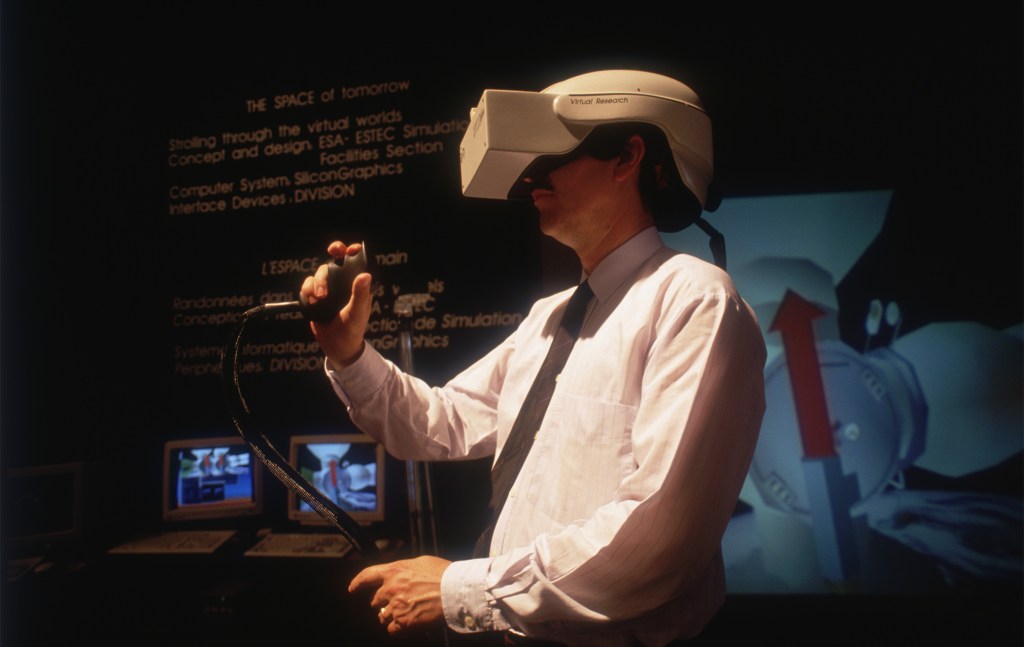The Metaverse: Opportunities and Risks Ahead
Table of Contents
-
Introduction: What Is the Metaverse?
-
A Brief History of Virtual Worlds
-
Key Technologies Powering the Metaverse
-
Economic Opportunities in the Metaverse
-
Real Estate and Digital Assets
-
The Metaverse and E-Commerce
-
Education and Training in Virtual Worlds
-
Healthcare in the Metaverse
-
Social Connection and Entertainment
-
Gaming and Its Central Role
-
The Metaverse and Remote Work
-
Risks of Privacy and Surveillance
-
Security Concerns and Digital Crime
-
Identity, Avatars, and Mental Health
-
Regulatory and Legal Challenges
-
Environmental Impacts of Virtual Worlds
-
The Financial Sector and Metaverse Loans
-
Investment Trends and Cautionary Tales
-
The Future: Hype or Reality?
-
Conclusion: Navigating a New Frontier
1. Introduction: What Is the Metaverse?
The Metaverse refers to a shared, immersive, and persistent virtual universe, accessible through the internet using avatars, VR headsets, AR glasses, and more. It is not a single platform, but a network of interconnected virtual environments where users can work, play, socialize, and even build economies.
As big tech giants like Meta (formerly Facebook), Microsoft, and Google dive into the Metaverse, the topic has gone from science fiction to a fast-developing reality. But with any massive shift in digital paradigms come both opportunities and risks—which we will explore in depth here.

2. A Brief History of Virtual Worlds
The idea of a parallel virtual existence has existed since the dawn of the internet. From Second Life to Minecraft and Roblox, early platforms paved the way. These precursors helped developers and users imagine how digital avatars could interact, trade, build, and live in alternative spaces.
The 2020s brought exponential growth in both hardware and software capabilities, pushing the Metaverse closer to reality. COVID-19 further accelerated the need for virtual presence, collaboration, and engagement—laying the groundwork for rapid Metaverse adoption.

3. Key Technologies Powering the Metaverse
The Metaverse wouldn’t be possible without innovations in:
-
Virtual Reality (VR): Creates full digital immersion
-
Augmented Reality (AR): Blends digital content with the real world
-
Blockchain: Facilitates ownership of digital assets (NFTs, virtual land)
-
5G and Edge Computing: Reduces latency for real-time interaction
-
Artificial Intelligence (AI): Powers smart avatars, environments, and data flow
These technologies are deeply interconnected and crucial to enabling a smooth, secure, and scalable Metaverse experience.
4. Economic Opportunities in the Metaverse
The Metaverse is creating entirely new industries:
-
Digital fashion
-
Virtual event planning
-
NFT art galleries
-
Virtual goods marketplaces
Companies are already monetizing virtual storefronts, selling exclusive digital wearables, and conducting product launches in immersive environments.
Businesses can also extend their branding and customer experience in 3D worlds, reaching younger demographics that spend more time online than in physical stores.
5. Real Estate and Digital Assets
Buying and selling land in the Metaverse is becoming big business. Platforms like Decentraland, The Sandbox, and Somnium Space allow users to purchase virtual plots using cryptocurrencies.
Some plots have sold for over a million dollars, driven by their virtual location, scarcity, and commercial potential. Brands like Adidas and Gucci have purchased land to host virtual flagship stores.
To explore financing options for digital asset investments, including virtual property loans, visit loans.rovamavel.com.
6. The Metaverse and E-Commerce
Imagine entering a virtual mall where you can try on clothes via your avatar, consult a virtual stylist, and pay using crypto or fiat—all in real time. That’s the future of Metaverse e-commerce.
Retailers are experimenting with Metaverse showrooms, virtual product demos, and AI-powered customer service bots that guide shopping experiences.
The convergence of e-commerce and immersive tech has potential to completely redefine consumer expectations.
7. Education and Training in Virtual Worlds
Metaverse classrooms can simulate real-world conditions for engineering, medicine, architecture, and more. Harvard and Stanford are already experimenting with VR-based classes.
Virtual training for hazardous jobs—firefighters, soldiers, surgeons—can significantly reduce risk and cost. The gamification of education can increase retention and engagement for students of all ages.
8. Healthcare in the Metaverse
Medical consultations via avatars, VR therapy, and virtual hospitals are entering the healthcare domain. Some benefits include:
-
Better patient engagement
-
Cost reduction
-
Global access to specialists
Mental health practitioners are also using VR environments to help patients confront phobias, practice mindfulness, or combat loneliness.
9. Social Connection and Entertainment
The Metaverse provides a sense of presence that’s difficult to achieve in traditional online platforms. From virtual concerts to immersive parties, the possibilities are endless.
Artists like Travis Scott and Ariana Grande have performed in Fortnite to millions of viewers. These experiences aren’t just marketing stunts—they’re revenue generators and community builders.
10. Gaming and Its Central Role
Gaming is the foundation of the Metaverse. Platforms like Roblox, Fortnite, and Horizon Worlds are examples of proto-Metaverses.
These games already offer user-generated content, real economies, and social engagement—key elements that the broader Metaverse is expected to adopt.
Gamers are early adopters of crypto, NFTs, and Metaverse currencies, forming a bridge between traditional gaming and future virtual economies.
11. The Metaverse and Remote Work
The future of work is increasingly remote, and the Metaverse can make it more interactive:
-
Virtual meeting rooms that mimic office dynamics
-
Collaborative workspaces with real-time editing and whiteboarding
-
Avatars that reflect real emotions through motion tracking
Platforms like Microsoft Mesh aim to create hybrid environments where physical and virtual workers collaborate in sync.
12. Risks of Privacy and Surveillance
With more personal data embedded into virtual environments—body language, voice, behavior—the risk of surveillance increases.
Companies collecting this data may misuse it or suffer breaches. Regulation has yet to catch up with these new privacy frontiers, making the Metaverse a potential goldmine for bad actors.
13. Security Concerns and Digital Crime
Cybercrime in the Metaverse is evolving:
-
Virtual scams and phishing
-
Identity theft through avatar cloning
-
Unauthorized access to private virtual spaces
A decentralized structure makes enforcement difficult. Users must take personal responsibility and platforms must invest in advanced cybersecurity infrastructure.
14. Identity, Avatars, and Mental Health
How users choose to represent themselves affects how they are treated—and how they behave. The “Proteus Effect” shows that avatars can alter real-life attitudes and confidence.
Spending excessive time in idealized virtual worlds may lead to dissociation, anxiety, and depression. Regulation and education are needed to create a healthy digital society.
15. Regulatory and Legal Challenges
Who owns your avatar? What rights do users have in virtual courts? How do taxes work for virtual businesses?
These are just a few of the complex legal questions arising. Countries are beginning to draft Metaverse-specific regulations, but there is little international consistency.
16. Environmental Impacts of Virtual Worlds
Although digital, the Metaverse consumes physical resources. Running blockchain networks and rendering virtual environments can demand enormous energy.
Efforts are being made to decarbonize digital infrastructure, but as the Metaverse scales, sustainability must be prioritized to prevent environmental degradation.
17. The Financial Sector and Metaverse Loans
Virtual banks, decentralized finance (DeFi), and peer-to-peer lending are emerging in the Metaverse. Users can borrow against NFT assets, get loans to buy digital land, and even invest in Metaverse startups.
As the economy matures, services like loans.rovamavel.com offer tailored financial solutions to help users and businesses participate in this digital frontier with confidence.
18. Investment Trends and Cautionary Tales
Early investors have seen astronomical returns—but also significant losses. The Metaverse is a volatile, speculative space where due diligence is crucial.
Pump-and-dump NFT schemes, rug-pull crypto tokens, and exaggerated land valuations are all cautionary tales. Smart investors must combine enthusiasm with skepticism.
19. The Future: Hype or Reality?
Is the Metaverse truly the next evolution of the internet—or just a hyped-up version of existing tech? Likely, it’s a bit of both.
As with the early internet, the Metaverse will go through cycles of growth, consolidation, and innovation. Its long-term viability depends on user adoption, utility, and trust.
20. Conclusion: Navigating a New Frontier
The Metaverse presents vast potential—from economic gains and educational transformation to societal shifts and new forms of connection. However, these opportunities are tempered by very real risks that must be addressed proactively.
Whether you’re an investor, developer, entrepreneur, or casual user, understanding this new ecosystem is essential. Resources like loans.rovamavel.com can provide financial guidance for navigating this exciting, unpredictable, and transformative digital frontier.



